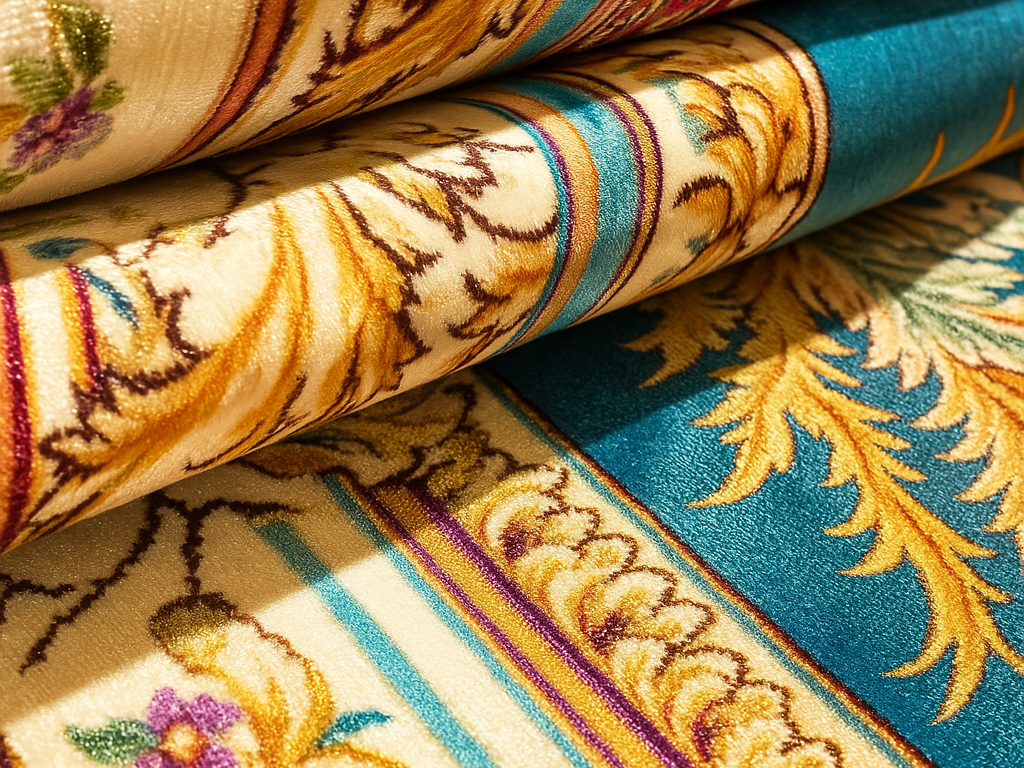Wall-to-wall carpet—often called broadloom or fitted carpet—is making a stylish resurgence in 2025. No longer confined to dated nostalgia, it’s gaining traction for its luxurious comfort, sound insulation, and seamless visual appeal. Designers now see it as a sophisticated element, especially when executed with rich textures, eco-conscious materials, and strategic color.

But what is wall-to-wall carpet exactly, and when does it make sense over area rugs or hard flooring? In this comprehensive guide, you’ll discover why this flooring option is back in favor—from cozy bedrooms to refined lounge spaces. We’ll walk you through its benefits, popular materials, design trends, and key steps for selection, installation, and care. Plus, you’ll get an expert comparison to area rugs and learn how ValHak crafts custom solutions to suit your style and space.
By the end of this article, you’ll not only understand what wall-to-wall carpet is—but also how to choose, layer, and maintain it for lasting beauty and performance. Let’s set the foundation for your next design project.
1. What Is Wall-to-Wall Carpet
Wall‑to‑wall carpet—also known as broadloom or fitted carpet—is flooring installed edge‑to‑edge across an entire room or contiguous area, custom‑cut and professionally installed to hug baseboards and contours with no gaps. Unlike loose rugs, it’s delivered in wide rolls of broadloom carpet and stretched into place, creating a seamless surface from wall to wall. It transforms a room into one unified, cushioned plane—ideal for bedrooms, lounges, hotel suites, or quiet workings spaces.
2. Advantages of Wall-to-Wall Carpets
When it comes to selecting flooring that transforms a space into one unified canvas, wall‑to‑wall carpet stands out for its multifaceted advantages. These benefits span comfort, aesthetics, performance, and long-term value.
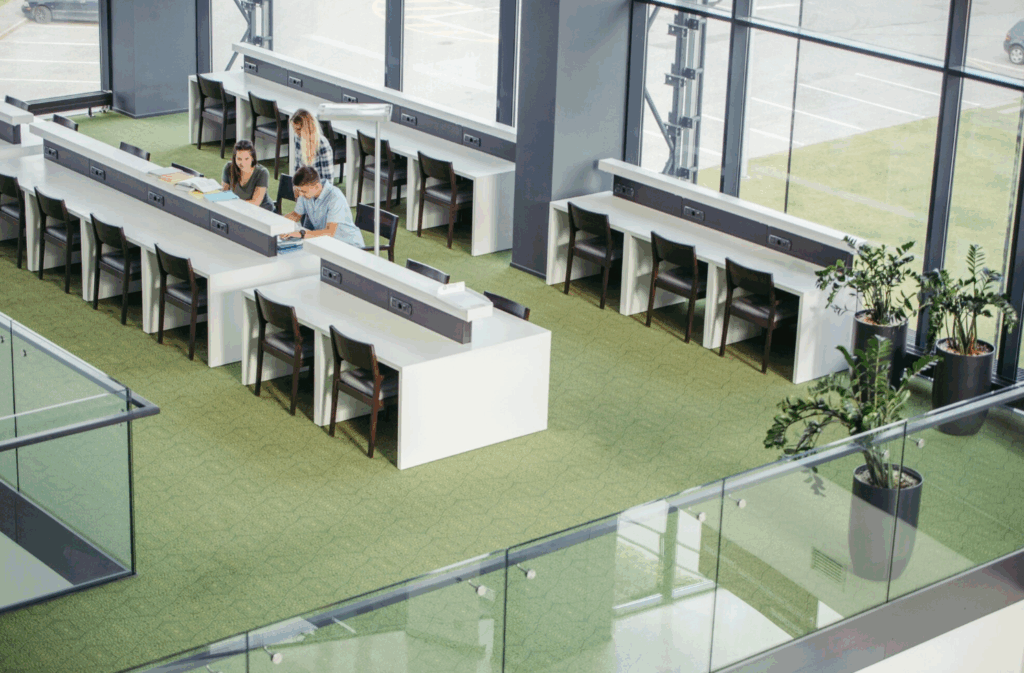
Unmatched Comfort & Warmth
One of the most tangible benefits: stepped on barefoot or in socks, wall‑to‑wall carpet feels infinitely softer and warmer than hard flooring. Underneath lies a layer of padding, equal parts cushioning and insulation, that enhances comfort while insulating your space. As noted by the Carpet and Rug Institute, this padding helps reduce energy loss, contributing to higher thermal efficiency in cooler climates.
Superior Sound Insulation
Imagine a home where footsteps and hollow echoes vanish. Wall‑to‑wall carpets absorb ambient noise, dampen footsteps, and limit sound transfer between floors—this is invaluable in multi-story houses, apartments, and office interiors. Studies suggest they can reduce interior noise levels by up to 25–30% compared to hard flooring options, greatly improving acoustic comfort.
Enhanced Safety & Injury Prevention
The thick cushioning of fitted carpet floors offers built-in slip resistance and a softer landing—crucial for homes with children or older adults. According to safety research, carpeted flooring significantly lowers slip and fall injury risks compared to hard surfaces.
Visual Cohesion & Aesthetic Continuity
Covering wall to wall, this type of carpet delivers a seamless, unified look, eliminating visual breaks and creating spatial harmony. Rooms feel more expansive and refined, especially when consistent color or texture extends across adjoining spaces. Designers often reference this continuity as a powerful tool in minimalist and maximalist schemes alike.
Customization Flexibility
Fitted broadloom can be tailored to match any room shape—from alcoves and angled walls to thresholds and built-ins. Seams (if necessary) are positioned with precision, blending patterns or nap direction invisibly. This bespoke quality surpasses mere area rugs in design flexibility.
Durability & Long-Term Value
High-quality materials such as nylon, wool, or blends offer long lifespans—often 10–15+ years with proper maintenance. By contrast, standard area rugs may need replacing more frequently. Although installation may require more upfront effort, wall‑to‑wall carpets offer longevity and consistent aesthetics over time.
Affordability & Cost‑Effectiveness
When measured dollar-per-square-foot, wall‑to‑wall carpeting typically costs less than hardwood or high-end luxe flooring. It also avoids the need for numerous large rugs and stays in place for years, making it a competitive, budget-savvy option—especially in bedrooms and living areas.
Indoor Air Quality & Allergen Control
While carpets can trap dust, modern fitted carpets are often made with low‑VOC materials and paired with HEPA filtration for healthier air. If regularly vacuumed and cleaned, they can actually reduce airborne allergens by trapping pollen and dust in the fibers rather than letting them circulate.
Energy & Thermal Benefits
The combination of carpet and padding creates a thermal barrier that can lower heating needs—especially valuable in chilly bedrooms and upper floors. As energy costs rise in 2025, this insulation benefit becomes a practical design consideration.
3. Common Materials of Wall-to-Wall Carpets
Wall‑to‑wall carpets today encompass a diverse realm of materials—from rugged synthetics to luxurious natural fibers. Your choice affects comfort, durability, eco‑impact, and overall aesthetic. Below, we explore the most popular options and their real-world performance:
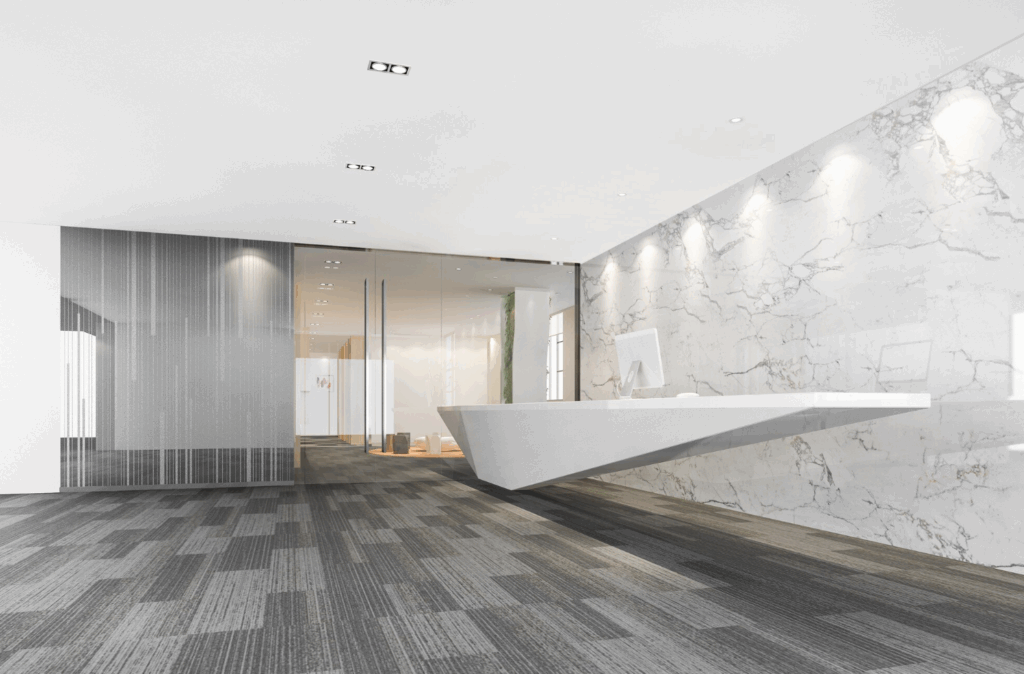
Nylon (Polyamide)
- Why it matters: Nylon remains the backbone of commercial and residential wall‑to‑wall installations. Known for high durability, excellent spring‑back resilience, and vibrant color retention, it withstands heavy foot traffic with ease.
- Performance: Nylon resists soiling and stands up well to compression. Some versions (e.g. “Stainmaster”) have enhanced stain resistance.
- Use cases: Ideal for high-traffic zones—hallways, living rooms, office corridors—where durability trumps plush softness.
Polyester (PET / PTT / Olefin)
- Why it matters: Polyester carpet fibers (especially solution-dyed PET or newer renewable PTT variants) deliver inherent stain resistance and colorfastness.
- Performance trade-off: Resistant to water-based spills, but oil stains may linger. Lower resilience than nylon—prone to matting over time in heavy-use areas.
- Use cases: Budget-conscious rooms, guest bedrooms, or seasonal use areas where occasional replacement is accepted.
Wool & Wool Blends
- Why it matters: Wool offers unrivaled natural softness, breathability, and flame resistance. Its thermal and acoustic properties are especially valued in premium installations.
- Blending benefits: Common blends (e.g. 80/20 wool-nylon) offer enhanced durability with reduced cost. Wools are easier to spot-treat but require periodic professional cleaning.
- Use cases: Bedrooms, lounges, luxury hospitality spaces or any interior prioritizing comfort and eco-lux design.
Natural Fibers: Sisal, Seagrass, Jute, Coconut
- Why it matters: These entirely natural fibers—particularly sisal and seagrass—are celebrated for texture, organic tonality, and low-VOC credentials.
- Performance: Durable yet firmer underfoot; moisture-sensitive and may show watermarks. Require careful installation and ventilation.
- Use cases: Hallways, dining rooms, eco-focused interiors, beach houses, or layered designs (e.g. carpet topped with area rug).
Recycled Nylon & Polyester (Sustainable Options)
- Why it matters: As eco-conscious demands swell in 2025, recycled fiber carpets—made from reclaimed PET bottles or household nylon—are booming. These reduce environmental impact while offering performance similar to virgin synthetics.
- Certifications matter: Look for low- or zero‑VOC options and recycled content verified through trusted systems.
- Use cases: Green building projects, modern homes with sustainability goals, or any client seeking high performance with minimal environmental trade-offs.
Acrylic & Specialty Fibers
- Why it matters: Though once more common, acrylic is now niche—priced lower than wool and reminiscent of its feel but often prone to pilling or low dye retention.
- Use cases: Low-traffic areas or décor-specific installations where wool-like texture at lower cost is needed.
Woven & Constructed Styles (Pile Types)
- Style variants: Materials above can be woven into cut-pile (Saxony, Plush), loop-pile (Berber), cut/loop textured styles, or frieze. Each weave affects look, softness, soil hiding, and durability.
- Premium textures: Saxony (luxurious smoothness), frieze (twisted, high resilience), loop/berber (extremely durable and casual).
4. How to Design Your Wall-to-Wall Carpet
Designing wall‑to‑wall carpet is more than picking a pattern—it’s an exercise in thoughtful spatial creativity. The right carpet ties together décor, functionality, and personal taste. Here’s how to plan design details that deliver impact, comfort, and cohesion.
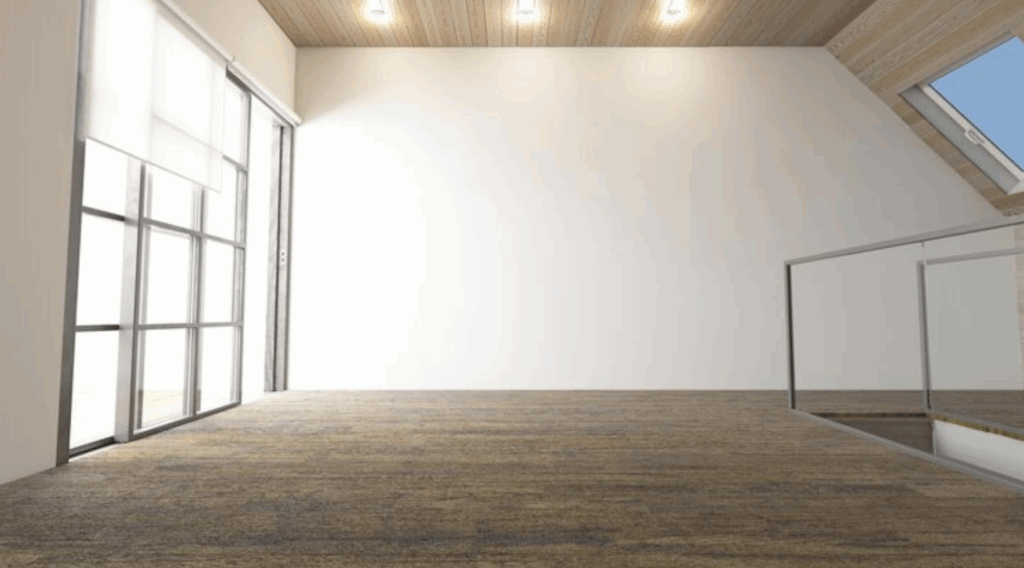
Step 1: Define the Purpose & Tone of the Room
- Functional context: Bedrooms favor soft, plush textures and calming tones. Living areas or playrooms may need hardier, low-pile textures that conceal foot traffic and withstand wear. Designers advise aligning carpet style with room usage so the result feels both luxurious and practical.
- Emotional tone: Want serene elegance or bold energy? Choose neutrals or soft textures for calm, familial spaces; opt for saturated colors or graphic geometry to signal bold personality.
Step 2: Select Colors & Patterns
- On-trend hues of 2025: Expect rich tones—moss greens, cherry reds, deep blues—alongside neutrals in beige, gray, and olive for balance. Mixing dark flooring with white trim yields defined and sophisticated contrast.
- Bold Patterns & Plaids: Geometric grids, Moroccan motifs, or tartan-inspired fields are gaining popularity. Their structured repeat adds rhythm and personality—especially in minimalist or Mid‑Century influenced interiors.
- 3D Texture Carpets: Loop pile or sculpted cut‑loop styles create tactile depth and visual interest—an ideal anchor for lounges or bedrooms in 2025.
Step 3: Choose Texture & Pile Type
- Pile selection: Plush Saxony for cushioned softness; cut/loop textures for character and resilience; Berber-style loops for durability and casual style.
- Scale matters: Oversized patterns can overwhelm small rooms. A smaller-scale pattern or a tonal texture helps maintain proportional balance.
Step 4: Align With Sustainability & Material Values
- Eco-mindful choices: Carpets made from recycled PET, natural wool, sisal, seagrass, or jute are leading the eco-design movement in 2025. These blend sustainability with performance and aesthetic depth.
- Texture and environmental harmony: Natural materials often pair beautifully with organic décor and support both a sustainable identity and tactile richness.
Step 5: Room Context & Transitional Flow
- Adjoining spaces: Use consistent flooring across connected zones to create visual continuity—especially useful in open-plan layouts. Conversely, if differentiating function (e.g., living to dining), introduce subtle pattern shifts or complementary tones.
- Traffic pattern flows: In corridors or staircases, directional or striped designs can help reinforce movement and rhythm.
Step 6: Mix & Layer (If Desired)
- For flexibility, install neutral fitted carpet and use area rugs atop it for added color or pattern. This layered approach is ideal where rental, seasonal styling, or evolving décor is planned.
- Feature rugs over neutral wall-to-wall carpets let you rotate or refresh without altering the foundational flooring.
Step 7: Consider Lighting & Room Undertones
- Study how natural and artificial light plays across the texture and color—carpet tones may shift under daylight or LED light.
- Be mindful of subtle undertones: gray with cool violet undertones may clash with warm beige walls; choose pairing wisely.
5. How to Select Your Wall-to-Wall Carpet
Choosing the right wall‑to‑wall carpet is about understanding your space, lifestyle, design goals, and long-term value. It’s not just picking a color; it’s selecting a foundation that performs as beautifully as it looks.
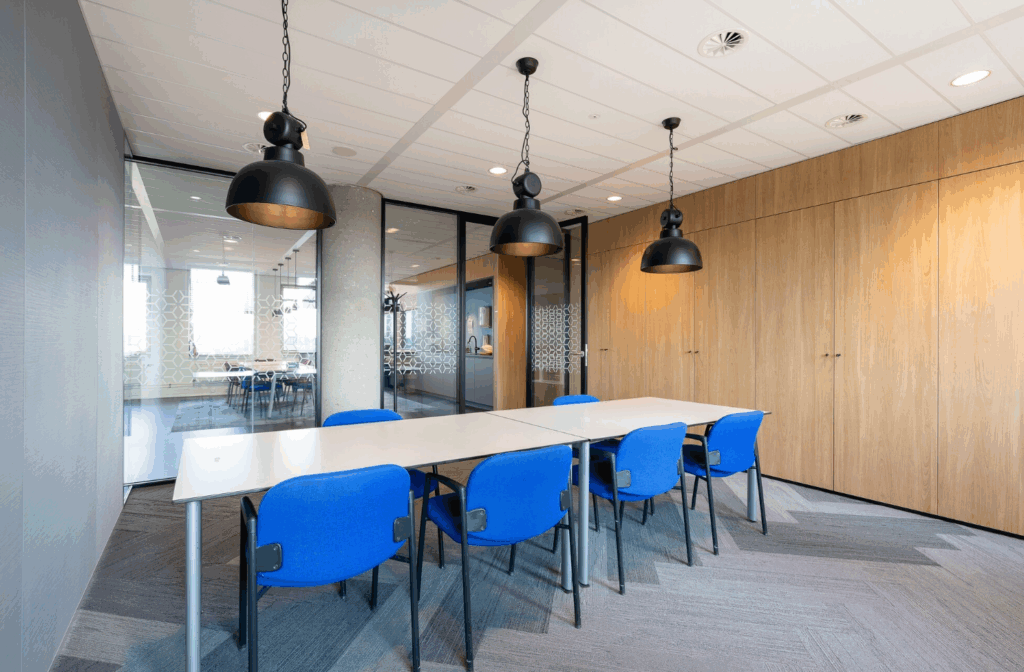
Step 1: Assess Your Room’s Usage & Traffic
- Function first: Active areas like hallways, family rooms, or playrooms need resilient fibers (e.g., nylon or wool-blends) and tight weave. Bedrooms or office spaces can accommodate softer materials like plush nylon or wool.
- Foot traffic matters: Carpets designed for high-traffic zones often have higher density, more twists per yarn inch, and wear ratings validated by tests simulating thousands of footsteps.
Step 2: Choose the Right Material & Fiber
- Nylon: Excellent all-around performer—high resilience, good stain resistance, lasting 10–20 years if maintained. Ideal for busy zones.
- Triexta / Polyester (PET/PTT): Built for vibrant color retention and stain resistance—generally more affordable but less resilient to crushing. Great in lower-traffic bedrooms or eco-conscious homes (especially PET made from recycled bottles).
- Wool & Wool Blends: Naturally luxurious, flame-resistant, breathable, and warm. Blends offer durability with lower cost—but expect periodic professional cleaning.
- Olefin (Polypropylene): Water-resistant and budget-friendly, but less resilient and prone to oil staining. Better suited to low-trafficked, moisture-prone areas.
Step 3: Weave, Pile Type & Texture
- Pile height: Short or looped piles are easier to clean and perform better under heavy use; plush higher piles feel softer but show wear faster.
- Style options:
- Cut pile (Saxony, plush, frieze): soft, luxurious—but shows footprints and vacuum marks.
- Loop pile (Berber): tightly woven, very resilient, ideal for high-traffic zones.
- Cut-loop or textured: visually interesting, hides soiling and pattern distortion.
Step 4: Color & Pattern Considerations
- Color tone: Neutral shades offer flexibility in décor and reduce visual fatigue. Dark colors hide stains; light tones enlarge visual space—but show dirt more.
- Pattern scale: Large motifs work in spacious interiors. Smaller-scale patterns and tonal textures suit compact or multi-use areas and offer good camo performance for traffic.
Step 5: Maintenance & Lifespan Needs
- Cleaning habits: If you’re busy, opt for low-maintenance fibers (e.g., solution-dyed nylon or polyester) with warranties covering pet stains, spills, or wear. Wool demands regular vacuuming and professional deep cleaning.
- Longevity considerations: Denser carpets with high twist count and quality backing resist flattening and deterioration. Combining these with a premium underlay enhances service life.
Step 6: Budget Alignment & Cost Planning
- Installed cost can range from ~$2 to $8+ per sq ft, depending on fiber, pile, and install complexity. Synthetic options tend toward lower-cost; wool and specialty blends toward the higher end.
- Total value: While cheaper carpets can save upfront, choosing a durable, high-quality fiber often reduces replacement cycles and yields stronger long-term ROI.
Step 7: Request Samples & Conduct Real-World Tests
- Always order samples: Examine how fibers look and feel under different lighting (morning, afternoon, artificial light). Pay attention to nap direction and subtle color shifts.
- Walk-test performance: Vendors may simulate wear; ensure sample offers the tactile feel and resilience you expect.
6. How to Install Wall-to-Wall Carpet
Installing wall‑to‑wall carpet is a craft. Done properly, it creates seamless luxury underfoot; any shortcut can lead to loose seams, wrinkles, or premature wear. Whether you’re DIYing or coordinating professionals, here’s how to do it right.

Step 1: Pre‑Installation Preparation
- Clear everything out: Remove all furniture, rugs, appliances, and baseboards if necessary. Clear walls, thresholds, and vent grills too. This gives uninterrupted access and ensures cleaner results.
- Remove existing flooring: Pull up old carpet, pads, and tack strips. Pry and roll carpet into manageable strips. Dispose of old padding and strips carefully.
- Inspect and fix the subfloor: Sweep and vacuum the floor. Patch cracks or uneven areas, secure any squeaky boards, and ensure the surface is completely clean and dry. Check moisture levels to prevent mold and future damage.
Step 2: Gather Tools & Materials
- Essential tools: Utility knife, chalk line, straightedge, hammer, pry bar, tin snips, knee kicker, power stretcher, seam iron, knee kicker, and carpet tucker.
- Materials:
- Tack (gripper) strips around the room’s perimeter with about ¼” gap from the wall.
- High-quality carpet pad (density around 8–10 lb) for comfort and durability.
- Seam tape and seaming iron for joining pieces invisibly.
Step 3: Install Tack Strips & Padding
- Tack strips: Nail tack strips firmly around the room’s edges, leaving a small gap to let the carpet tucker tuck edges neatly.
- Padding: Roll out the underlay, fitting snugly against walls, and perpendicular to planned seam lines. Secure seams using double-sided tape or adhesive. Do not tack over tack strip areas—they should be inside the inner border.
Step 4: Carpeting — Measure, Cut & Align
- Measure accurately: Calculate total square footage, including closets and irregular shapes. Add a 10% buffer to allow for seams and future repairs.
- Lay the carpet: Roll out carpet with pile direction consistent across the room. Allow carpet to relax flat for several hours if tightly rolled.
- Seam placement: Large rooms often require seams. Align pile direction carefully and use seam tape with a heated seaming iron to fuse edges cleanly.
Step 5: Stretch & Secure the Carpet
- Knee kicker: Use this in small spaces or corners to press carpet into tack strip hooks.
- Power stretcher: Anchor on one wall and stretch carpeting across the room in stages for full tension and wrinkle-free fit. This tool is essential for large rooms.
- Final adjustments: Walk across carpet or use a carpet roller to settle seams and remove loose fibers.
Step 6: Trim, Tuck & Finish Edges
- Trim excess: Use a sharp utility knife and straightedge to carefully trim edges adjacent to walls, transitions, or doorways.
- Tuck edges: Push the carpet edge under baseboards or press into transition moldings using a carpet tucker or putty knife.
- Transitions: Secure edge trims or thresholds at doorways to bridge carpet to hard flooring.
Step 7: Final Inspection & Cleanup
- Walk the floor to check for loose spots, puckers, or misaligned seams. Re-stretch if needed.
- Vacuum thoroughly to raise pile and remove installation debris. This step ensures freshness and visual appeal.
7. Wall-to-Wall Carpet Design Trends in 2025
Wall‑to‑wall carpet isn’t merely rebounding—it’s reimagined. In 2025, it’s not just flooring but design statement, comfort enhancer, and sustainable anchor all at once.

The Cozy Comeback & Nostalgic Resurgence 🧶
Designers and homeowners alike are embracing wall‑to‑wall carpet as an antidote to minimalism. From The Guardian:
“Carpet is experiencing a revival … driven by rising energy costs and nostalgia for the Seventies.”
Warm, cushioned flooring is being seen not as dated—but as consciously comforting, especially in bedrooms and lounge areas.
Earthy Neutrals & Moody Hues
Stepping away from bland beige and gray, 2025 favors more characterful neutrals and deeper tones like sage green, terracotta, maroon, and mushroom gray—creating space that’s calm yet rich.
Dark carpets especially are embraced for their elegance and ability to ground lighter décor—especially when paired with smart lighting, white trim, or pastel walls.
Bold Patterns & Geometric Graphics
Daring designs are back in style. Think checks, plaids, tile prints, animal motifs, and abstract geometrics—all making wall‑to‑wall carpets focal points rather than seamless backdrops.
HouseGrail and Zarif Carpets spotlight these graphic statements particularly in home offices, boutique living rooms, and modern bedrooms.
Textured & 3D Weaves
Flat textures are out; ribbed, cut-loop, sculpted, or multilevel loop piles are in. These tactile carpets boost both function and aesthetics, hiding dirt while inviting touch.
Miamisburg flooring reports “plush, high-pile carpets with multi-level loop patterns [that] provide both sophistication and durability.”
Sustainable & Natural Materials
Eco-conscious materials—from jute, sisal, and wool to recycled PET and nylon—are no longer niche. In 2025, they’re expected. Consumers and designers favor carpets with environmental transparency.
HouseDigest and Mill Creek Carpet emphasize that sustainability isn’t a feature; it’s a baseline expectation.
Customization & Modular Design
Modern wall‑to‑wall carpets increasingly offer tailored, customizable layouts—printed imagery, pattern placement, and modular tile systems for DIY-friendly installs.
In 2026, expect further adoption of smart carpets (e.g., moisture or wear sensing), biodegradable fibers, and bespoke installations.
Layering & Strategic Contrast
Rather than carpet as invisible canvas, designers layer fitted carpet with accent rugs or stair runners:
- Bold-pattern runners over neutral carpet elevate transitional zones.
- Layering adds dimension while allowing easy seasonal or styling shifts.
Statement Carpets as Décor Foundations
Design professionals now use fitted carpet as the visual base, building color palettes and materials around it:
- Floors become anchors: bold patterns, deep tones or textured neutrals guide furniture, wall colors, and linens.
- Even Art Deco décor leverages carpets as supporting visual statement pieces.
What’s Falling out of Favor
- Dust-prone Berber and light pastel hues (overused in previous decades) are now dated.
- Outmoded beige or worn gray carpets are losing traction—designers urge deeper, richer tones for more permanence and personality.
8. Wall-to-Wall Carpet vs. Area Carpet: Which One Is Better
Choosing between wall‑to‑wall carpeting (fitted broadloom) and area rugs isn’t just aesthetic—it’s about function, budget, cleaning, flexibility, and emotional feel. Each option has unique benefits. Here’s a structured comparison to help you decide instinctively and strategically.
| Feature | Wall‑to‑Wall Carpet | Area Rug |
| Coverage & Look | Complete floor coverage, seamless uniform look | Covers defined zones; works well layered |
| Comfort & Insulation | Keeps warm, plush underfoot, absorbs sound | Adds softness to specific spots; portable warmth |
| Design Flexibility | Once installed, looks stay fixed | Easily swapped; wide range of patterns, shapes |
| Cleaning & Maintenance | Requires professional cleaning; harder to access | Removable and easier to clean |
| Budget & Cost Structure | Lower upfront per‑sq‑ft cost; higher long-term upkeep | Can range from cheap to luxury; may need replacement |
| Safety & Slip Risk | Fixed, stable flooring—minimal trip hazard | Edges may slip unless anchored |
9. Maintenance Tips for Wall-to-Wall Carpets
Keeping fitted carpet looking fresh, functional, and beautiful for years hinges on consistent care and smart habits. These maintenance tips are designed to extend lifespan, preserve comfort, and ensure hygiene—while supporting eco-conscious practices where possible.
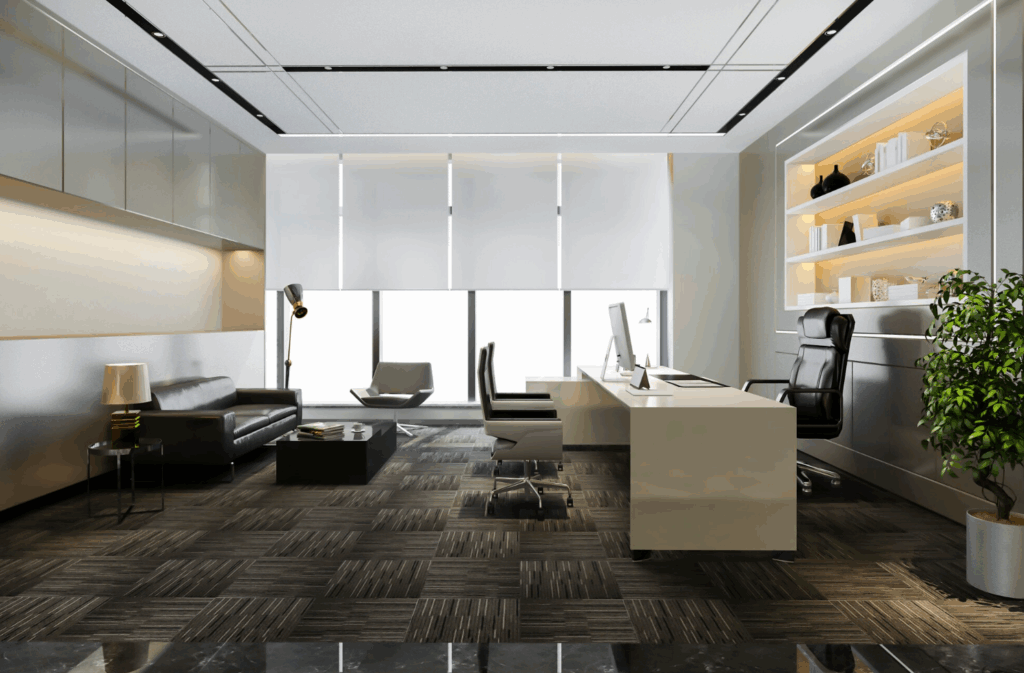
Vacuum Regularly — The Foundation of Care
- Frequency matters: Vacuum high-traffic areas at least twice a week, other areas once weekly. It prevents dirt from embedding into the fibers, which leads to abrasion and fiber breakdown.
- Use proper gear: Prefer vacuums with HEPA or high-filtration bags, adjustable height settings, and wide suction heads to capture debris effectively without damaging the pile.
Address Spills & Stains Immediately
- Blot, don’t rub: After a spill, use a clean white cloth to gently blot the area—don’t rub, which spreads the stain deeper.
- Natural cleaning agents: Mix one part white vinegar to three parts water or bar-clean detergent and water. These solutions neutralize most food, beverage, and pet stains safely.
- Pro-grade spot removers: For stubborn marks like wine, blood, or oil, an enzyme cleaner (e.g. OdoBan) or targeted product like Blue Magic Spot Lifter is recommended—apply foam, let sit, then blot clean.
Deep Clean Periodically
- Schedule pro cleaning: Plan professional hot-water extraction or low-moisture cleaning every 12 to 18 months, more often in pet or high-traffic homes. This removes deep-set soil and allergens.
- DIY deep clean: If you’re cleaning at home, pre-vacuum, pre-treat stains, use machine with recommended solutions, then allow proper drying—ideally with airflow from fans or open windows.
Protect the Carpet From Wear & Soil
- Use doormats or entry mats: Place mats at doors to trap grit and moisture before it reaches the carpet. Consider a shoe-free household policy or slippers.
- Furniture pads & rotation: Attach coasters under furniture legs and occasionally rotate heavy pieces to avoid permanent indentations.
- Manage airflow & filtration: Change HVAC filters regularly and seal gaps near baseboards to reduce dust and filtration soil buildup—a phenomenon where air pushes dust into carpet edges.
Monitor & Diagnose Carpet Aging
- Spot wear signs: Inspect annually for faded patches, fraying edges, matting, odor retention, or transferred stains—these are signals your carpet may need professional attention or replacement.
- Lifespan expectations: With the right care, nylon or quality wool broadloom can last 10‑15 years or more; lower-grade materials often require replacement at 5–7 years.
Specialized Cleaning Techniques
- Dry cleaning & encapsulation: Instead of soaking, these techniques use dry compounds or polymer encapsulation that traps and crystallizes dust without prolonged dampness—perfect for quick decluttering and fast-dry finishes.
- Deodorizing: Lightly apply baking soda to neutralize odors, let sit for a few hours, then vacuum. Avoid heavy application, which may clog vacuum filters.
Environmental & Preventive Care
- Humidity & temperature control: Maintain indoor humidity between 30–50% and room temperature at moderate levels to avoid mold risk or fiber degradation.
- Sunlight protection: Use blinds or curtains to limit direct UV exposure, which fades carpet fibers and shortens lifespan.
10. Find Custom Wall-to-Wall Carpet at ValHak
At ValHak, we specialize in bespoke, custom wall‑to‑wall carpet tailored to your space and vision. Our service includes:
- Design Consultation: Share your room dimensions and style preferences. We’ll help refine pattern, color, and material choices.
- Mock‑Up & Visualization: See your proposed carpet digitally before production.
- Craftsmanship: Whether you prefer sustainable wool blends, recycled fibers, high-performance nylon, or unique printed graphics, our artisans deliver top-tier quality.
- Post‑Installation Support: Care guides, maintenance advice, and reorder services for future expansions.
ValHak brings together comfort, design innovation, sustainability, and tailored craftsmanship—all in one elegant, fitted floor solution.
11. Conclusion
Wall‑to‑wall carpet is not merely nostalgic—it’s undergoing a 2025 resurgence. With advances in materials, printing technologies, and eco‑conscious sourcing, it blends warmth, sound control, design flexibility, and personalized artistry like never before. When chosen thoughtfully—considering usage, color, material, and installation—it can elevate any interior, whether luxurious lodge, modern minimal, or artistic visionary. At ValHak, we help you transform your floor into foundation—a seamless, stylish, sustainable canvas made just for you.
12. FAQs
1. Can wall‑to‑wall carpet be used in kitchens or bathrooms?
Generally not recommended—high moisture and frequent spills make maintenance difficult. Stick to tile, vinyl, or area rugs in those zones.
2. How long does wall‑to‑wall carpet typically last?
With quality material and good upkeep, expect 10–20 years in residential settings—wool or high‑grade nylon tends to last longest.
3. Is wall‑to‑wall carpet allergy‑friendly?
Yes, if vacuumed regularly and using low‑VOC, hypoallergenic fibers like wool or recycled nylon. HEPA filters help reduce dust and allergen buildup.
4. Can I install wall‑to‑wall carpet myself?
DIY installations are possible but tricky. Precise cutting, stretching, and seam alignment are best handled by professionals.
5. Can I get custom patterns or printed designs?
Absolutely. ValHak offers dye‑sublimation and custom broadloom services so you can translate virtually any design or imagery into fitted carpet.

